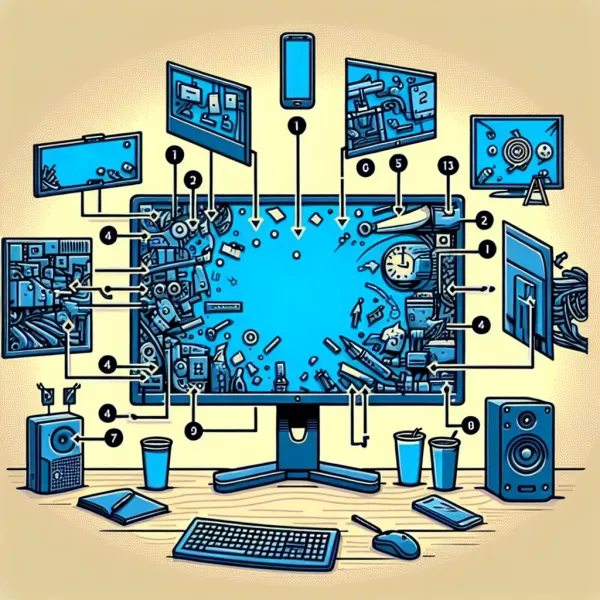5 Common Problems with the Dell P3222QE Monitor and How to Address Them
5 Common Problems with the Dell P3222QE Monitor and How to Address Them
The Dell P3222QE is a popular 32-inch 4K monitor known for its stunning visuals, USB-C connectivity, and productivity-focused features. However, like any piece of technology, it isn't without its flaws. In this article, we’ll explore five common problems users encounter with the Dell P3222QE and provide practical solutions to help you get the most out of your monitor.
1. USB-C Connectivity Issues
One of the standout features of the Dell P3222QE is its USB-C port, which allows for video, data transfer, and power delivery through a single cable. However, some users report intermittent connectivity issues, where the monitor fails to detect the connected device or loses the connection unexpectedly.
Solution: Ensure that you are using a high-quality USB-C cable that supports both video and power delivery. Additionally, check for firmware updates for both the monitor and your connected device. If the problem persists, try connecting the monitor to another device to rule out hardware issues.
2. Color Calibration Concerns
While the Dell P3222QE boasts excellent color accuracy out of the box, some users find that the colors appear slightly off or inconsistent, especially when used for professional tasks like photo editing or graphic design.
Solution: Use a hardware color calibration tool to fine-tune the monitor’s settings. Dell also provides a built-in color calibration feature that can be accessed through the on-screen display (OSD) menu. Adjust the brightness, contrast, and color temperature to suit your needs.
3. Backlight Bleeding
Backlight bleeding is a common issue with many monitors, including the Dell P3222QE. This occurs when light leaks around the edges of the screen, creating uneven brightness levels, particularly noticeable in dark scenes or low-light environments.
Solution: Check your monitor’s warranty and consider requesting a replacement if the backlight bleeding is excessive. For minor bleeding, reducing the screen brightness or adjusting the viewing angle can help minimize its visibility.
4. Input Lag and Ghosting
Although the Dell P3222QE is designed primarily for productivity and not gaming, some users report input lag and ghosting when playing fast-paced games or watching high-motion videos.
Solution: Enable the monitor’s “Fast Response Time” mode through the OSD settings. While this won’t make the monitor a gaming powerhouse, it can reduce ghosting and improve overall responsiveness. For serious gaming, consider a monitor specifically designed for gaming purposes.
5. Power Delivery Limitations
The Dell P3222QE offers up to 65W of power delivery through its USB-C port, which is sufficient for many laptops. However, high-performance laptops that require more power may experience slower charging or even battery drain during heavy usage.
Solution: If your laptop requires more than 65W, consider using the laptop’s original power adapter in addition to the USB-C connection. Alternatively, look for a monitor with higher power delivery capabilities if this is a critical feature for your setup.
Conclusion
The Dell P3222QE is a versatile and feature-rich monitor that excels in many areas, but it’s not without its challenges. By addressing these common issues, you can ensure a smoother and more enjoyable experience with your monitor. Whether it’s optimizing USB-C connectivity, calibrating colors, or managing power delivery, these solutions will help you get the most out of your Dell P3222QE.
Have you encountered any of these problems with your Dell P3222QE? Share your experiences and solutions in the comments below!
